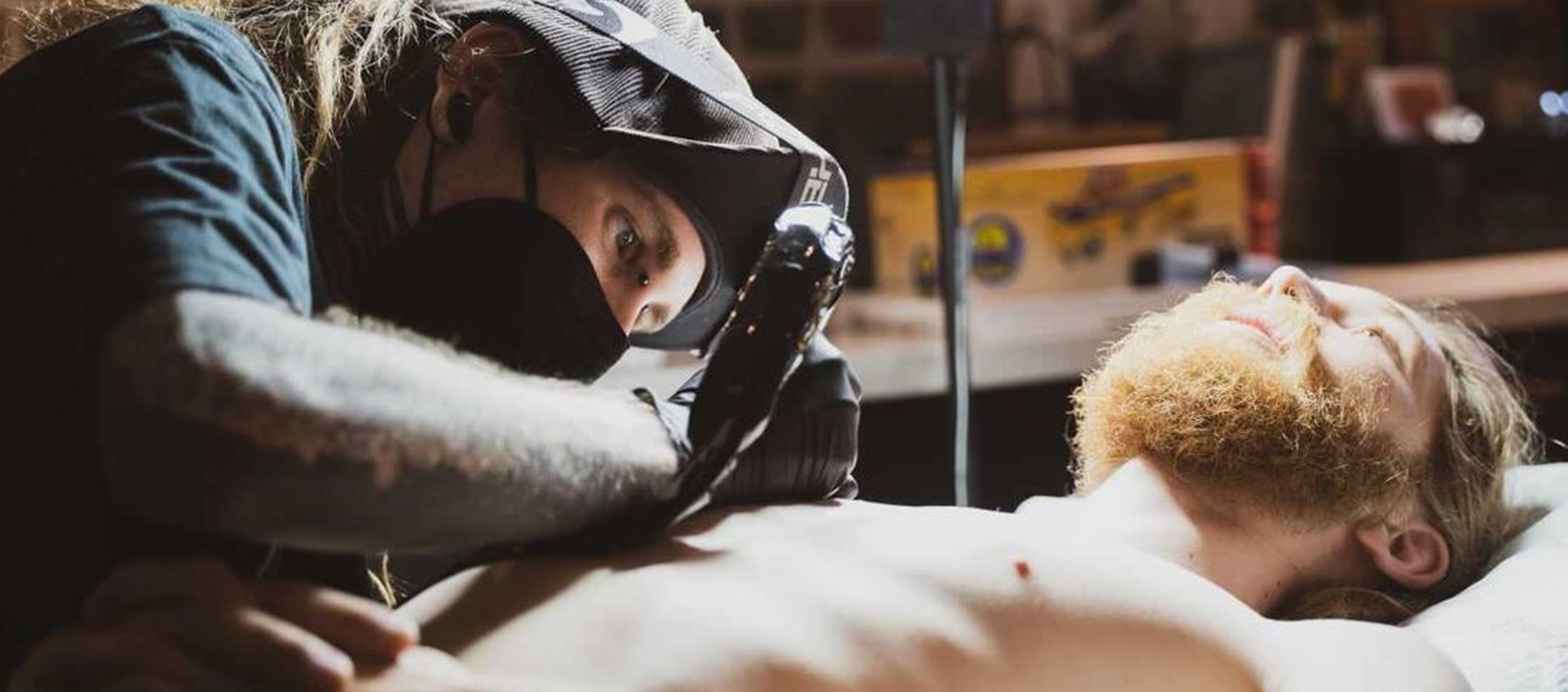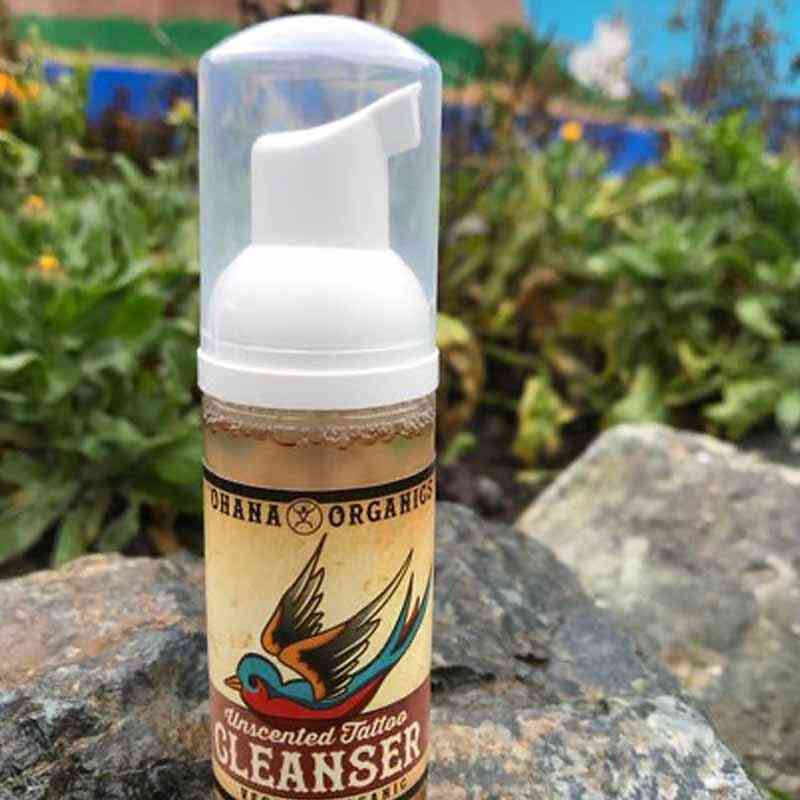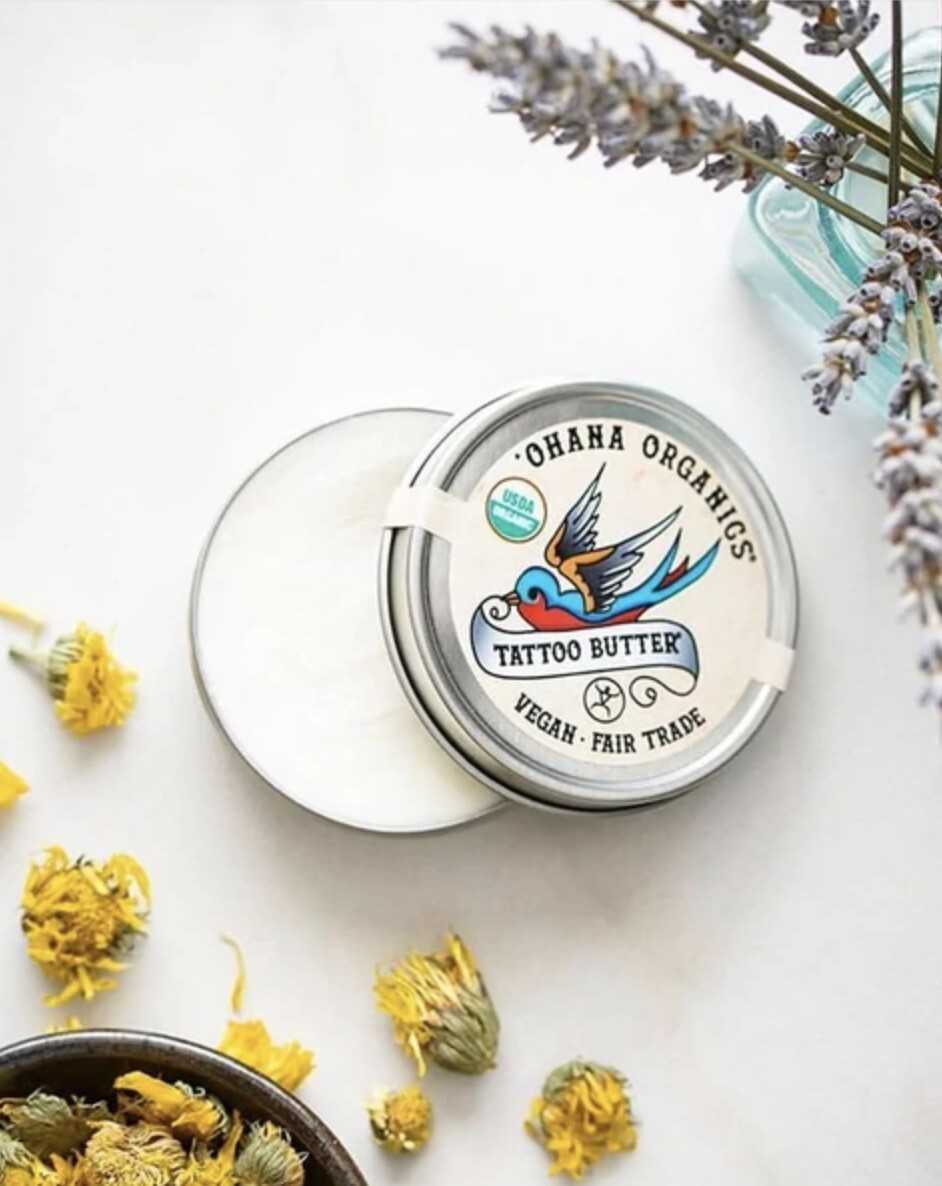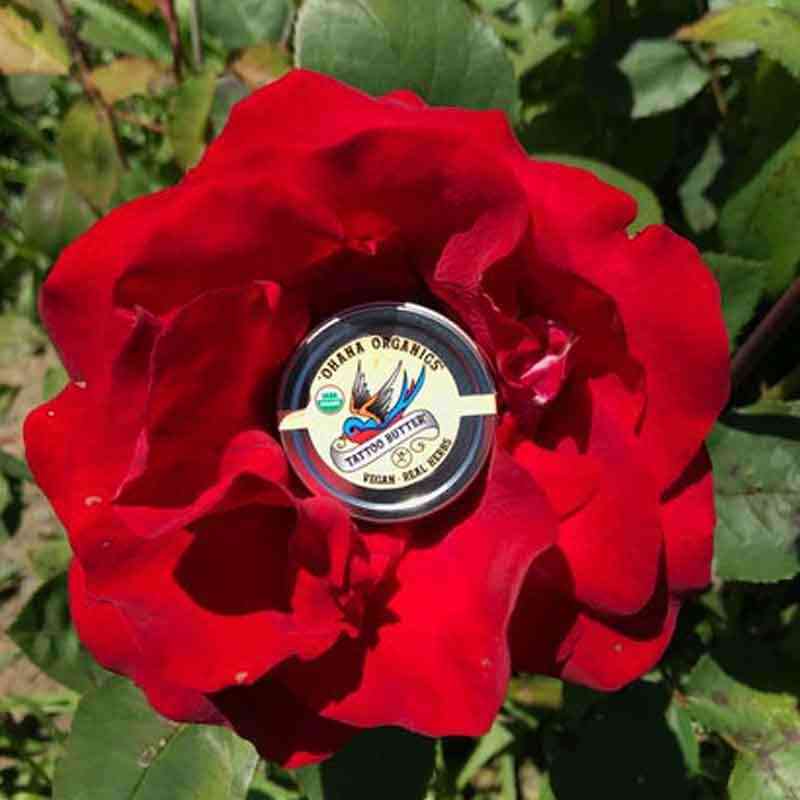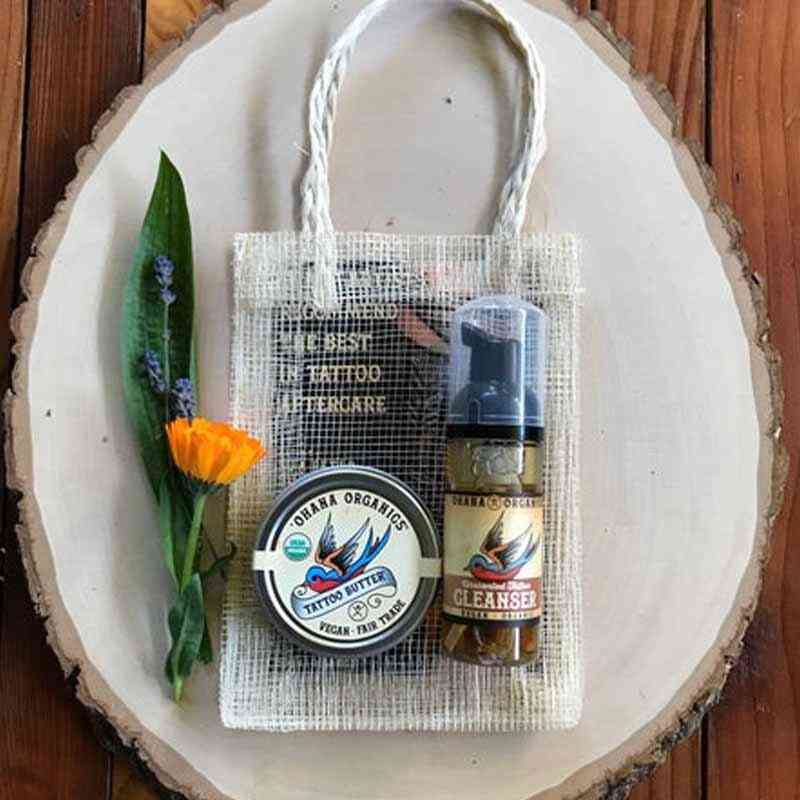When you make the investment to get tattooed, aftercare is the most important step to make sure your tattoo looks great and lasts over time.
Day 1: When you get home
After your tattoo is finished, your artist will apply ointment then wrap your tattoo. This covering protects the open skin from bacteria, sunlight, and from rubbing against clothing. If your tattoo session finishes after 5 pm you can sleep with the wrapping on. Be sure to wear a shirt or lay a towel down because in some cases ink can get on the sheets.
Remove the bandage after 4-5 hours and perform the following wash procedure:
1. Run your tattoo under warm water in shower or under tap. Slowly turn the water to as hot as you can stand and keep it there for 15-20 seconds.
This process helps flush out pores from dried blood and pigment that is hard to see. It then tightens pores to promote less peeling and a shorter healing period.
2. Run the hot water again and wash the area with a non-scented soap. Never use scented soaps on your tattoo.
3. Blot dry with a clean towel and let air dry for 5-10 minutes
Next, apply a very thin layer of ointment. We recommend using petroleum-free skin care products to heal your tattoo. Ask us for suggestions. Massage gently into the tattoo so that it looks shiny, not goopy. Blot off any excess ointment from the skin. Don’t bandage it again.
Wear clean loose fitting, clothing. Sleep only on freshly washed and dried sheets. Keep all pets from sleeping on the bed for at least the first week of healing. If your tattoo sticks to your clothing or sheets, get the fabric wet before pulling it off otherwise you could damage your tattoo.
We recommend taking 500-1,000 mg Vitamin C to help your skin’s healing process.
Other good supplements to take are: Vitamin A (10,000-25,000 IU), Zinc (15-30 mg), and Bromelain (500-1,000 mg).
Wet heal plastic wrapping
Always wash your hands well before touching your tattoo and make sure you have the Aveeno Body Wash, Aquaphor and a clean towel handy. Remove the wound covering after 5 hours, or the following morning if your artist finished late in the day.
The first few days the tattoo will secrete a thick black slimy layer when you remove the wrap. This is totally normal.
Using the body wash, hot water and your bare hands, firmly wash the tattoo. The goal is to get all of the slime off the tattoo so it looks flat and matte every time you wash it. Dry the tattoo with the towel and apply a very thin layer of Aquaphor.
Completely rewrap your tattoo with plastic wrap after each washing for 3 days.
This keeps the tattoo clean and flexible, as well as serving as a barrier against your clothes.
DO NOT RECOVER WITH ANYTHING BUT PLASTIC WRAP. No pads, gauze or fabric that can stick to the fresh tattoo. Wash your tattoo like this 3 times a day for a week. After a week decrease washing to once or twice a day.
Reapply Aquaphor throughout the day and anytime the tattoo feels dry, tight or like it is pulling when you move. The key is to keep it moist and flexible.
Your tattoo will form a thin sunburn-like crust after a few days.
This is normal and the layer needs to flake off naturally. Picking and scratching will result in damage to the inked area. While your tattoo is in its initial healing stage (first two weeks) you must not soak it in baths, hot tubs, or swimming pools. Showering is fine, just no soaking. Refrain from dry heat like a sauna, as well.
Limit your range of motion and no working out or yoga for the first week.
In the second stage of healing (two – six weeks) the tattooed area must not be exposed to strong direct sunlight. Doing so will cause the tattoo to age prematurely and look dull.
After the tattoo is healed always use sunblock to prevent fading.
First 3-5 Days:
Black & Gray Tattoos
-Wash and apply ointment 6-8 times daily for 3-4 days.
Full Color Tattoos
-Wash and apply ointment 6-8 times daily for 4-5 days (color tattoos have more ink, so they take longer to heal). For the first couple of days, the tattooed skin may feel warm to the touch and have a reddish appearance.
The tattoo will look less vibrant as the healing process continues. Any redness or mild swelling usually goes away near the end of the first week.
Working out or doing any activity that stresses newly tattooed skin should be avoided or limited for two weeks. Don’t work out for the first few days. Sweat, which carries bacteria, can cause infection.
Clean immediately after strenuous activity. And watch out, gym equipment is full of germs.
Days 3-21:
A person can continue using the washing technique above throughout the first week and then as needed. How often washing is necessary will vary depending on a person’s activity levels and environment.
After the last day of applying ointment, begin using an unscented, hypoallergenic lotion in its place.
If you react to any lotion or ointment immediately clean the skin and try a different lotion, cream, or balm. We prefer using natural ointment that we sell, Ohana tattoo butter.
Avoid products with petroleum and scented essential oils.
Use lotion for three weeks or for as long as skin is still dry and flaky. Your tattoo will probably begin to peel and itch 3-6 days after the procedure. Scabs will often form in the first few days, and ink may still come up through the skin and need to be washed away. It is important not to pick the scabs or scratch the skin. The skin is likely to feel very itchy during this week. Don’t scratch it! Additional moisturizer may help relieve the itch.
Using a moisturizer that is kept in the refrigerator may also soothe itchy or irritated skin. You may smack the tattoo to relieve itching and/or take Benadryl. Make it comfortable.
A person should avoid submerging the tattoo in water or getting the tattoo wet during the first 2 weeks, except for when washing it.
Keep the tattoo out of direct sunlight for at least two months. Afterwards, your tattoos will always need to be protected from the sun. We recommend using a sunscreen with minimum 50 SPF.
Do not soak your tattoo. No hot tubs or baths for two weeks… showers only. You may shower as soon as you remove the initial bandage. Do not shave the area for 2-3 weeks. Keep others from touching your tattoo. If someone accidentally touches or bumps into your new tattoo, quickly clean the area and start over with fresh lotion.
Designate all/any lotions and ointments for your tattoo only. Do not share with others or risk cross-contamination. Always pat your tattoo dry with a clean paper towel or cloth towel. If the area was shaved before the tattoo was done, watch for in-grown hairs. If a follicle becomes inflamed, you may spot treat with a triple antibiotic ointment like Neosporin.
Only use it on the irritated area, not the entire tattoo for 2-3 days. Antibiotic ointments can cause the tattoo pigment to fade.
The outer layers of skin should completely heal by the end of week three. The inner layers of skin can take longer to heal but require much less care. The chance of infection is reduced once the outer layers of skin have healed, as there is no open wound for bacteria to infect.
The final stage of healing can be slow but requires patience. Most of the larger scabs will have flaked and fallen away by now. Small scabs and bits of dead skin may appear, but these will also clear up as the healing process continues.
Scabs and flaking skin can cause the area to look dry and dull. Applying moisturizer, and protecting the tattoo from the sun, will help with these issues. Moisturizing regularly in the months following the tattoo will help keep it looking bright and clear.
Protecting the tattoo from the sun with clothing while it is healing, and applying sunscreen after it has healed, is especially important in the first few months.
Ink Rejection or Allergy:
At any stage in the healing process, the body may reject an ink color. If the body is allergic to an ink, a raised and painful rash may form on the skin.
Ink allergies may occur because tattoo ink colors contain many different substances. For example, the black ink contains carbon and the red ink contains mercury sulfide or shellfish. Anyone experiencing a rash on or around a tattoo should visit a doctor, who can identify and treat the rash. The person may also wish to contact their tattoo artist.
